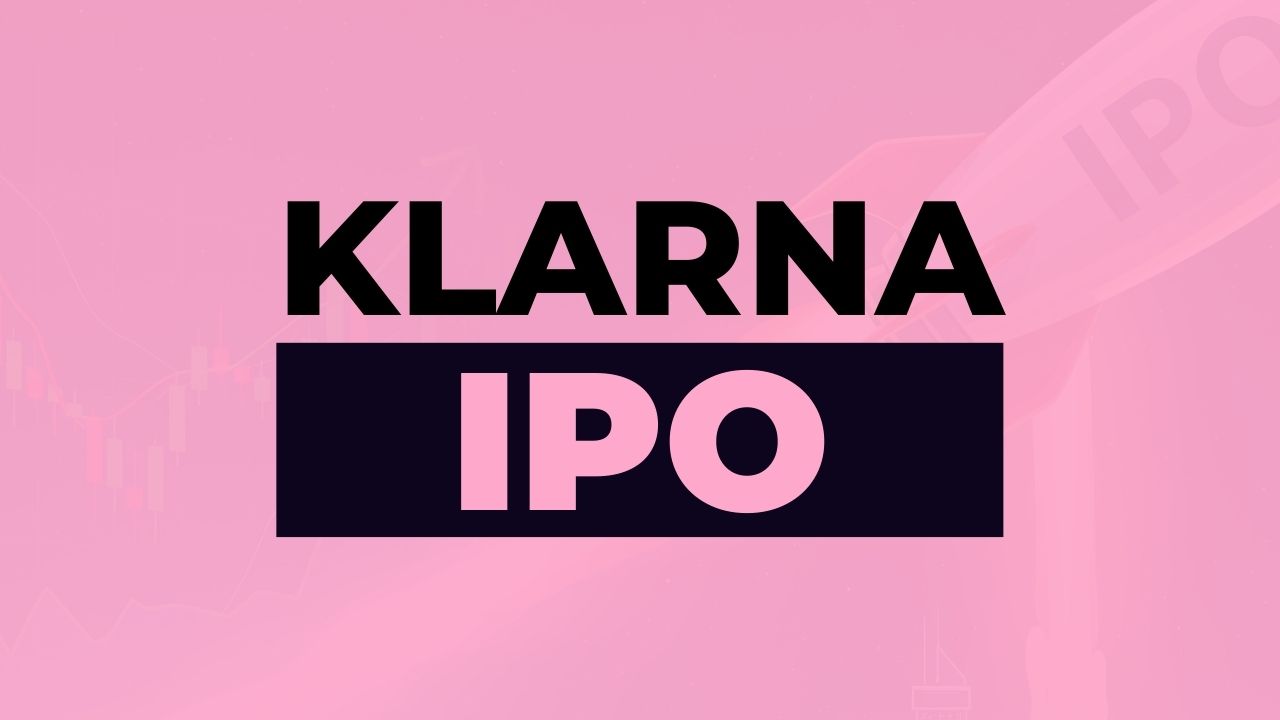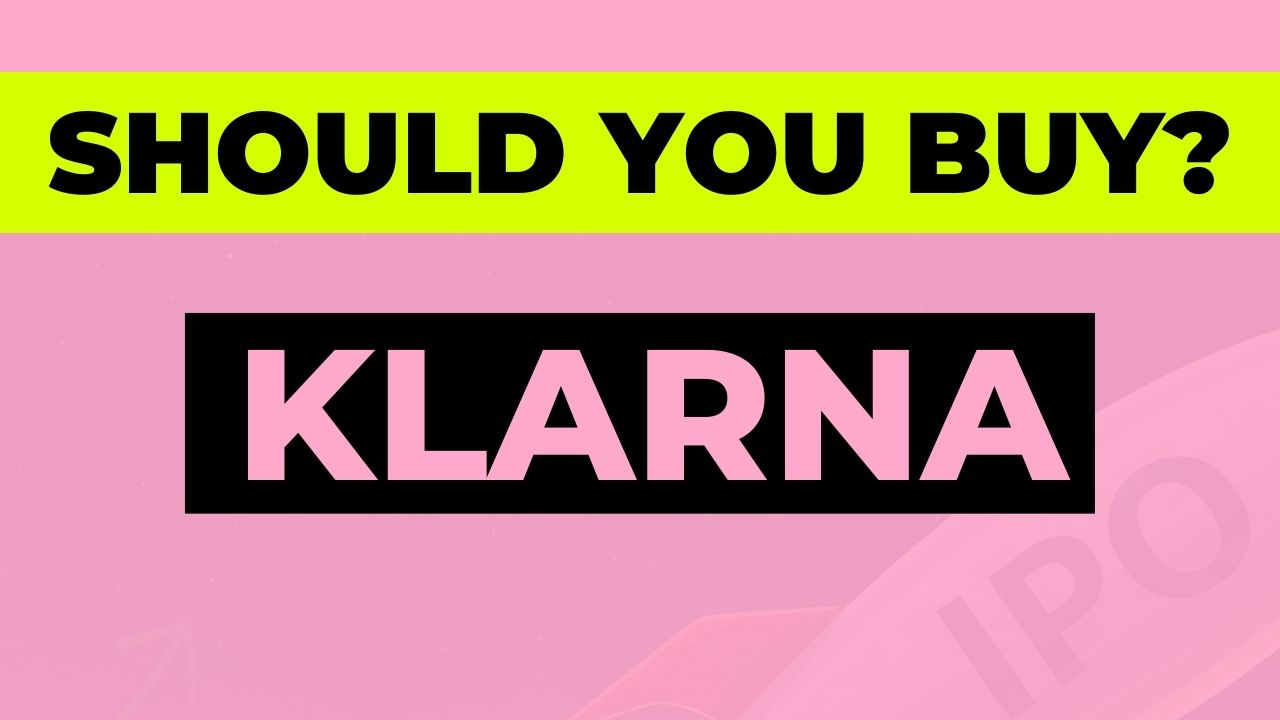An Initial Public Offering (IPO) is a big event for a company. It is the time when a private company sells its shares to the public for the first time on a stock exchange. This gives people like you and me the chance to invest, and it also gives the company money to expand its business.
Klarna, a well-known fintech company from Sweden that became popular with its “buy now, pay later” (BNPL) service, is now preparing for its much-awaited listing on the New York Stock Exchange (NYSE). It will trade under the ticker KLAR, and the launch could happen as early as September 10, 2025.

Also Read – Klarna IPO 2025 – KLAR Stock Targets $14B Valuation on NYSE
Earlier this year, Klarna had delayed its IPO plans because of unstable markets caused by U.S. tariffs. But now, the company is back with strong demand from investors, showing that the fintech industry is regaining confidence.
At present, Klarna’s IPO subscription looks healthy, with the company guiding investors that the share price may be set at the higher end or even above the original range of $35–$37 per share. This means the company could reach a valuation close to $14 billion.
How Much Will IPO Cost?
Klarna plans to raise up to $1.27 billion by selling about 34.3 million shares in the price band of $35–$37. If the shares are sold at the midpoint price of $36, Klarna will be valued between $13–$14 billion.
For small investors, the cost will depend on how many shares your broker can give you. You will need to pay the offer price per share, plus any brokerage charges.
If you are a retail investor using platforms like Robinhood, SoFi, or Fidelity that give IPO access, the minimum number of shares you can request depends on the broker. Some may allow as little as 1 share, while others allocate in round lots (100 shares).
If the allocation is in 100 shares, then at the midpoint price of $36 ($35–$37), you’d need around $3,600 (plus brokerage fees).
Keep in mind that IPOs can be very volatile. Sometimes the price shoots up on listing day (called an IPO “pop”), but prices can also fall sharply depending on market mood.
Is Klarna IPO Worth It?
The choice to buy Klarna IPO shares or not is completely personal.
It depends on your risk-taking ability, how long you want to hold the investment, and your financial goals. You should ideally take advice from a financial advisor before investing. What we can do here is look at the pros and cons of Klarna’s IPO, whichmay give you a clearer picture of whether this IPO suits you or not.
Klarna has grown from being a simple BNPL provider into a much wider digital banking platform. However, its future success will depend on how well it handles competition and economic challenges.
Pros of Klarna IPO
Klarna has a very large user base with 111 million active users worldwide. Over the last 12 months, the company processed around $112 billion worth of transactions, helped by big partnerships with companies like Walmart and DoorDash. These deals add more people to its network and increase sales.
Klarna earned $3 billion in revenue in the same period, up from $2.3 billion in 2023. Importantly, the company became profitable again in 2024 with a $21 million net profit, after several years of losses. Klarna is also using AI for customer support and fraud detection, which could make its operations more efficient.
The company has also started offering debit cards and digital advertising, which reduces its dependence on BNPL fees alone. With more people shopping online, Klarna’s 675,000 merchant partners could help it keep growing steadily.
If you believe in the long-term future of digital payments and innovations in fintech, Klarna looks like a strong player. Its expansion into neobanking may help it capture daily spending habits, not just small impulse purchases.
Cons of Klarna IPO
On the negative side, Klarna still faces financial challenges. In Q2 2025, the company reported a $53 million net loss, mainly because of higher credit losses. When economies slow down or inflation rises, people may default on BNPL loans, which can hurt Klarna’s business.
Klarna’s valuation of $14 billion looks expensive. It is valued at around 4–5 times its revenue, which is higher than many competitors. These high expectations may not hold if interest rates stay elevated or if regulators tighten rules around BNPL. For example, in the U.S., the Consumer Financial Protection Bureau (CFPB) is already keeping a close eye on companies like Klarna.
Competition is another big risk. Klarna faces strong rivals like Affirm (valued at $28 billion), PayPal, and Apple Pay Later. Along with this, Klarna has some corporate issues such as weaknesses in internal controls and dual-class share structures. The dual-class system means that new investors will have less say in decision-making compared to insiders, which can be a governance concern.
You should avoid Klarna IPO if you are uncomfortable with risky fintech stocks or if you feel that rising consumer debt—like people financing everyday purchases such as groceries—is a dangerous trend in a slowing economy.
Also Read – What is Nonfarm Payrolls (NFP)? – Complete Guide for Traders and Investors
What Reddit Has to Say About Buying Klarna IPO?
Discussions on Reddit show a divided view, but most users are skeptical.
In subreddits like r/investing and r/stocks, many users call Klarna overvalued. They point out its high valuation multiples (65x earnings) and question its competitive advantage in the crowded BNPL market. Some even call it “overpriced hype” or a “cash-out opportunity” for early investors while leaving risks for retail buyers.
One thread on r/investing warns that retail investors could face “massive losses,” noting Klarna’s recent $50+ million quarterly loss and growing regulatory risks. In r/stocks, people compare it to Affirm’s IPO journey, where the stock fell from $100 to $10 before recovering to $50. Some users suggest waiting to buy after the IPO hype fades or even shorting the stock.
On the positive side, a few Redditors highlight Klarna’s Walmart partnership and its large user base as growth drivers. However, the overall Reddit tone is cautious. Many say Klarna is only good for short-term trading, not for long-term holding.
What X Has to Say About Buying Klarna IPO?
On X (formerly Twitter), the mood is also mixed but tilts toward caution. Users often mention Klarna’s shift from BNPL to a broader digital banking model as a big challenge. Some posts highlight the fact that the IPO is priced near the higher range ($37 or more), calling it a sign of hype. But they also warn that Klarna still needs to prove it can survive beyond its BNPL roots, especially when competing with PayPal and Apple.
One analyst wrote that Klarna’s $14 billion valuation is a “reality check” for fintech companies that use AI in payments, especially in a world already burdened with debt. Others posted jokes like “buy now, pay later for puts,” suggesting they expect the stock to fall, or even betting on Klarna going bankrupt due to defaults.
Of course, some bullish voices remain. They point out strong investor demand and partnerships with companies like DoorDash as positives. Yet most advice from X users is to wait and watch, as the stock may dip after the IPO. For many, Klarna looks like a fast-moving fintech bet rather than a stable investment.
This article is for informational purposes only and should not be considered financial advice. Investing in stocks, cryptocurrencies, or other assets involves risks, including the potential loss of principal. Always conduct your own research or consult a qualified financial advisor before making investment decisions. The author and publisher are not responsible for any financial losses incurred from actions based on this article. While efforts have been made to ensure accuracy, economic data and market conditions can change rapidly. The author and publisher do not guarantee the completeness or accuracy of the information and are not liable for any errors or omissions. Always verify data with primary sources before making decisions.

